What to wear cross country skiing: dress for winter exertion
Knowing what to wear cross country skiing is all about protecting yourself from freezing conditions while also regulating your own temperature during exertion

Getting the balance right and knowing what to wear cross country skiing takes a bit of practice. It's one of the best cardiovascular workouts around – a pursuit that'll have your body pumping, burning calories by the bucket load and working up a sweat, so you'll overheat quickly if you dress like the Michelin Man. However, by its very nature, it's also a pursuit that takes place in freezing conditions – you're going to need some kind of warmth and protection from your clothing.
So, knowing what to wear cross country skiing is more than just wrapping up warm on a cold day. Whereas you might own insulated ski pants, gloves and jackets for downhill skiing, cross country skiing requires a whole different wardrobe.
Dressing for cross country skiing is all about protecting yourself from the cold outside while managing your own heat and allowing the moisture generated by sweat to escape. Instead of bundling up, you’ll want to wear breathable, lightweight layers that allow unrestricted movement and can be removed as needed, and work together to quickly move sweat away from your body, known as moisture wicking.
In this feature, we detail the gear needed for taking on standard cross country ski trails. For longer ski touring or ski mountaineering missions, you'll need warmer kit.
Meet the expert
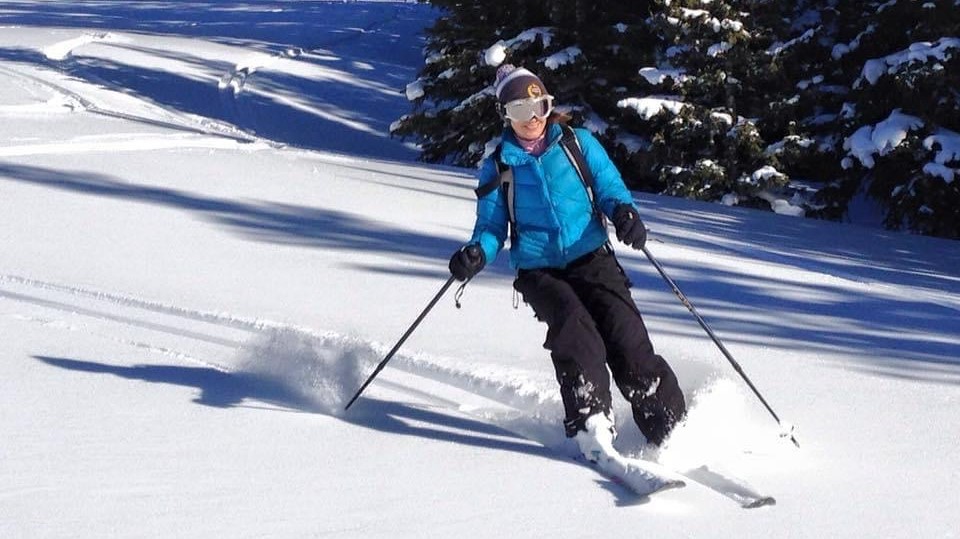
Julia lived in Vali, Colorado for 11 years, having taking the plunge and quit her job to live the ski town lifestyle. She loves hitting the slopes or the backcountry trails and has tested and reviewed plenty of ski gear in her time. These days, she's back in her native Scotland and is one of Advnture's main kit experts.
Today's best deals
Base layer
- Thermal base layers will keep you warm while providing breathability and moisture-wicking capabilities
- A Merino base layer or a hybrid are good options
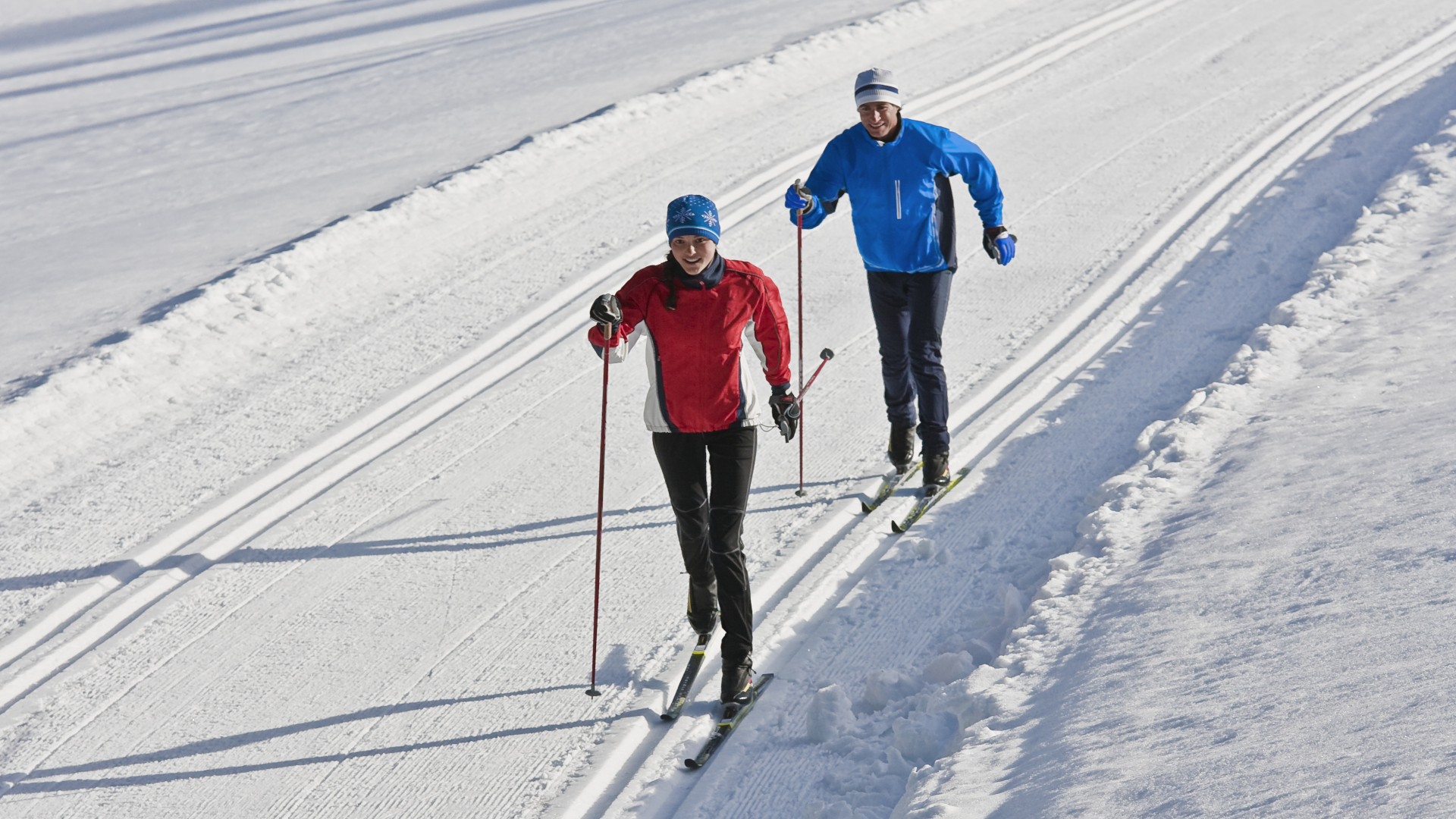
The first layer on your upper body should be a lightweight, long sleeve base layer made of wool or a synthetic material that will draw sweat away from your body. Merino wool, in particular is prized for its high warmth to weight ratio and its moisture-wicking capabilities. As well as this, it's anti-microbial, meaning it won't smell of sweat, even after repeated wears.
Whichever top you choose, make sure it has lots of stretch so you can move properly without rubbing. Elastane content in the main fabric will provide the kind of stretch you'll be after.
Mid layer
- Insulating layers between your base layer and outer shell keep you warm
- Multiple thin layers are better than one thick layer
You’ll want an insulating layer over your base layer, such as a light fleece jacket or perhaps a light softshell jacket. This should be one you can tie around your waist or stash in your ski backpack if you get hot.
All the latest inspiration, tips and guides to help you plan your next Advnture!
For really cold adventures, having more than one mid layer is a good idea and always remember that multiple thin layers are preferable to one thick one. This is because multiple layers trap hot air between them and you can always take a couple off, customizing how thick your layering system. This kind of approach gives you the ideal level of temperature control.
Outer layer
- The most important function of a cross country skiers outer layer is to block wind
- Ski jackets and hiker's waterproofs both fit the brief
On very cold days or if there’s a wind, wear a windproof layer on top, such as a hardshell waterproof jacket. The best ski jackets are designed specifically with snow sports and the freedom of movement you'll require in mind. However, fundamentally, there's not a great deal of difference between waterproof hardshells designed for skiers and those designed for hikers.
Waterproof hardshells obviously repel rain and the like, though it's their wind blocking properties that are so appealing to cross country skiers. Windchill can be a tangible hazard above the snowline, robbing body heat through the process of convection and potentially leading to hypothermia. This is why a quality outer layer can be so important on cross country ski missions.
Tights
- Tights give the freedom of movement needed to ski comfortable
- A thicker pair will provide the insulation you need for colder days
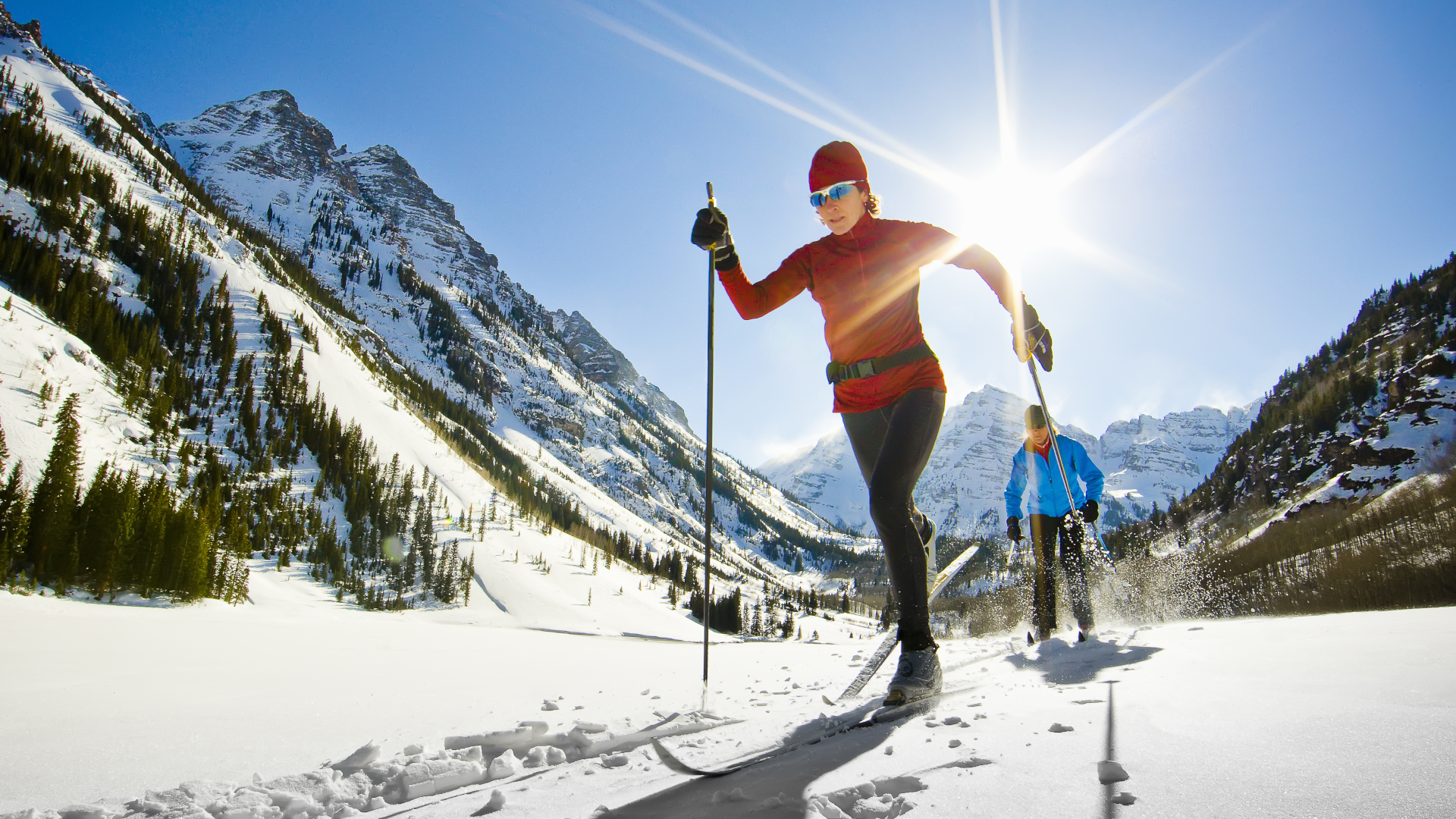
Rather than insulated ski pants or overalls where you'll overheat and won't be able to move as freely, you’ll want to wear cross country ski tights that allow lots of movement and are meant for sweating in. Choose a thicker pair that offer some wind resistance if you’re planning going out on colder days.
Headwear
- Fleece headband or beanies are great for cross country skiing
- In really cold, windy conditons, you might want to consider a balaclava
A fleece headband is ideal for cross country skiing, to cover your ears and keep the sweat out of your eyes without being too warm. You can also wear a thin beanie.
For really cold missions when it's really gusting, you might choose to employ a balaclava to protect your face from windchill. The very best balaclavas are crafted from highly breathable materials, which prevent your ski goggles or sunglasses from steaming up. If conditions ease, you can always pull it down to your neck, where it doubles up as a warm neck gaiter.
Thin, mid-calf socks
- Thick, knee-high socks will be too warm
- Lightweight, mid-calf options are ideal for cross country skiing
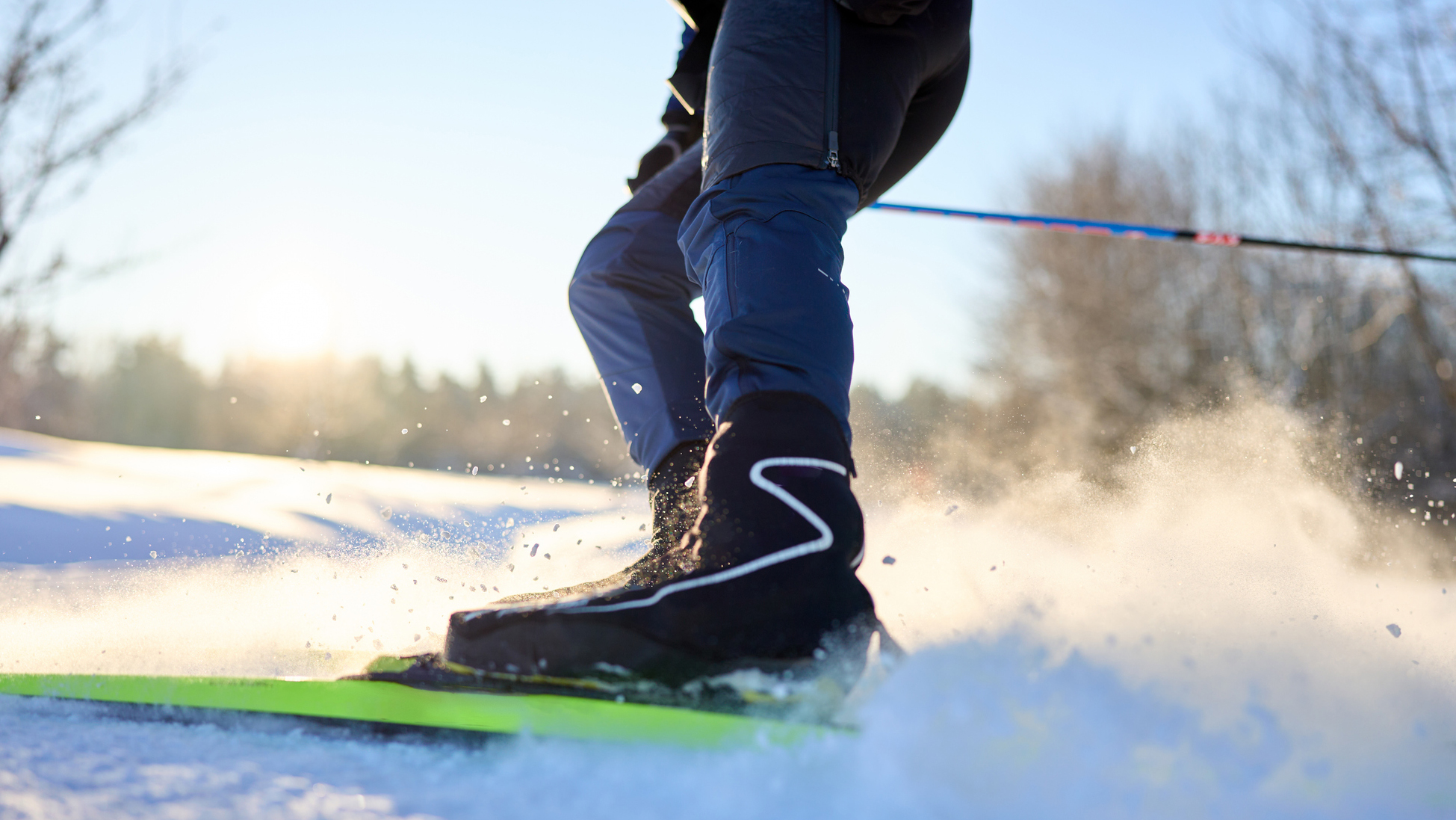
You don’t want thick, knee high ski socks as these will likely be too warm. Opt for lightweight, thin socks and go for mid-calf since cross country ski boots don’t come up as high as alpine boots. Our guide to the best hiking socks has some great options.
Liner gloves
- Liner gloves will wick sweat away from your hands and give you grip on your poles
- It's worth having thicker gloves if you intend to stop at any stage
Leave your bulky ski gloves at home and go for thin liner gloves like trail running gloves that wick sweat away from your hands and allow you to grip your poles properly and remove layers without having to take them off.
If you plan to stop for any considerable length of time, it's worth stashing some thicker gloves in your pack. Dachstein mitts come highly recommended for keeping hands warm during such stops.
Cross country ski belt or backpack
- A country country ski belt is a lightweight option for gear storage
- For ski touring and ski mountaineering journeys, you'll need a ski backpack
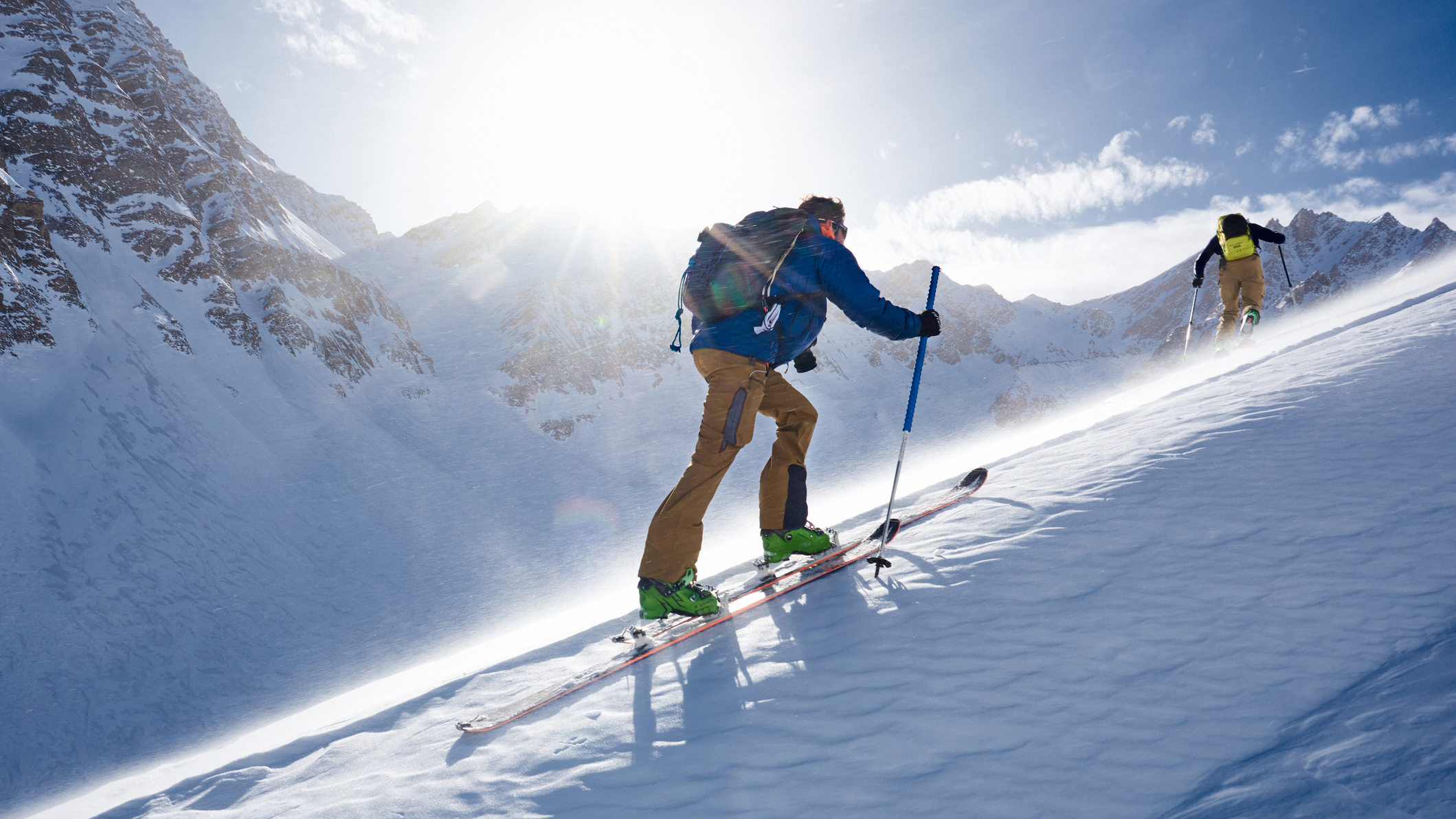
Needless to say, you’ll need something to carry your water and perhaps outer layers, but a backpack will hinder your movement on speedier missions, so invest in a cross country ski belt which you wear around your waist to carry your gear.
If your outing is more akin to ski touring or ski mountaineering, you'll need a backpack to carry all the items you'll need to keep you safe.
Julia Clarke is a staff writer for Advnture.com and the author of the book Restorative Yoga for Beginners. She loves to explore mountains on foot, bike, skis and belay and then recover on the the yoga mat. Julia graduated with a degree in journalism in 2004 and spent eight years working as a radio presenter in Kansas City, Vermont, Boston and New York City before discovering the joys of the Rocky Mountains. She then detoured west to Colorado and enjoyed 11 years teaching yoga in Vail before returning to her hometown of Glasgow, Scotland in 2020 to focus on family and writing.

